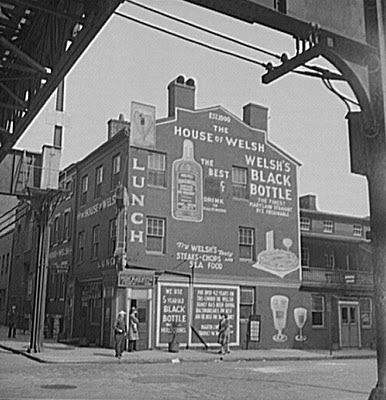Wednesday Afternoon Profile - Bank of America Building
 When most Baltimoreons look at the Baltimore Skyline they invariably see the second tallest, but in my opinion, the most striking building in this city - the Bank of America Building. Its golden cap radiates in the the daytime and glows at night, as a beacon of light drawing your view into downtown. When walking on the street one can't help but look up as its brick facade gives way to white motif pilasters and arches on the setback upper floors. A green shingle and polished copper temple caps the mighty work of 1920s architecture.
When most Baltimoreons look at the Baltimore Skyline they invariably see the second tallest, but in my opinion, the most striking building in this city - the Bank of America Building. Its golden cap radiates in the the daytime and glows at night, as a beacon of light drawing your view into downtown. When walking on the street one can't help but look up as its brick facade gives way to white motif pilasters and arches on the setback upper floors. A green shingle and polished copper temple caps the mighty work of 1920s architecture.Once the largest building in Baltimore, the Baltimore Trust Building, as it was first known, was finished in 1929 on the eve of the Great Depression. Designed by the architectural firms of Taylor & Fisher and Smith & May, it was Baltimore's first modern setback skyscraper. Standing high above the corner of Light and Baltimore Streets, it reaches 509 feet into the air. A mix of Art-Deco and Gothic elements make for a strikingly unique building. Constructed at a time when form superseded function, the exterior has bold ornamentation and sculpture. The interior lobby showcases murals depicting the Great Fire of 1904 and the Battle of Baltimore.
It remainded the talk of the town until 1973 when the more modern (and bland!) Legg Mason Tower was constructed. Even though it now plays second fiddle, the old man of the city still catches the eye quicker and strains the neck longer than it's younger neighbor.



Comments
Post a Comment